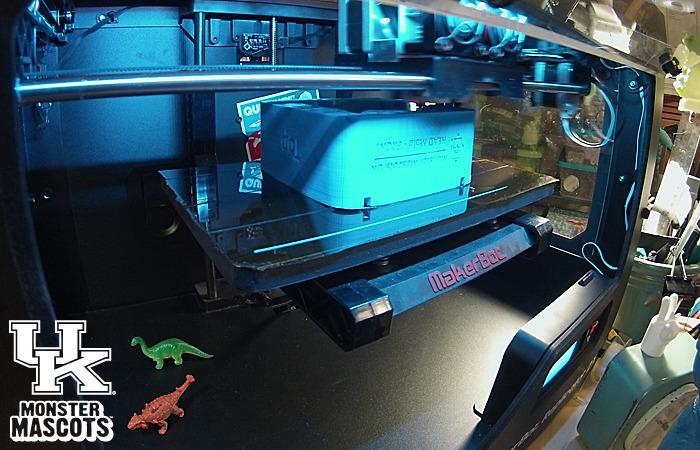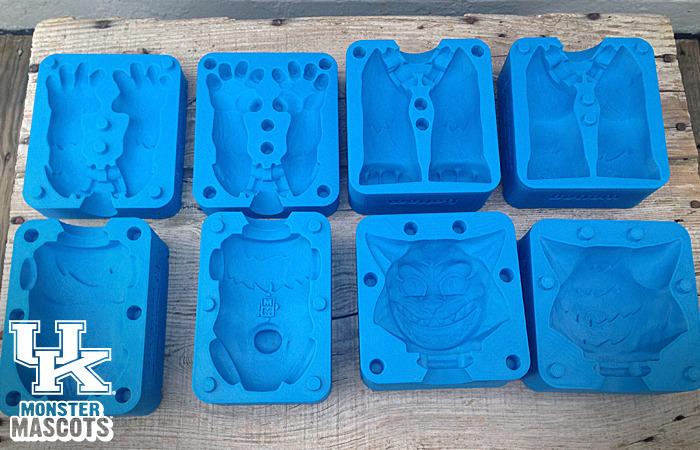 Natalie Mathis and Quincy Robinson started their Kickstarter campaign this week to seek funding for their entrepreneurial innovation: 3D printing plus local flavor. One of the aspects of 3D printing that has been heralded far and wide is the fact that it democratizes creation. With its ability to customize at the drop of a hat (or nearly so) it only makes sense to bring the objects it is producing back to the local people too. It’s somewhat like a micro-brewery approach to printed products: not just Made in America but Made in (insert region or town here).
Natalie Mathis and Quincy Robinson started their Kickstarter campaign this week to seek funding for their entrepreneurial innovation: 3D printing plus local flavor. One of the aspects of 3D printing that has been heralded far and wide is the fact that it democratizes creation. With its ability to customize at the drop of a hat (or nearly so) it only makes sense to bring the objects it is producing back to the local people too. It’s somewhat like a micro-brewery approach to printed products: not just Made in America but Made in (insert region or town here).
It was the Made in America that first attracted the two designers who were part of the 2014 class of First Batch, a Cincinnati-based manufacturing accelerator. Mathis described their beginning approach:
“Originally, we hoped to produce our mascots in the U.S.A. We priced a facility in New York, but found the cost to be prohibitive. It was First Batch that connected our company with manufacturers who worked with us until we discovered how to make our figures entirely in the Cincinnati area. It’s great for local business.”
While these two may be new on the business scene, they bring a lot of solid experience to the design and creation of these types of products. Robinson has worked for over a decade creating and sculpting for the toy industry. He turned that eye to their first mascot portrait: the University of Kentucky Wildcat.
 The first step was to create a digital model for the negative of each section of the mascot. Those were then printed on desktop 3D printers. In turn, those blocks were taken to an aluminum sand casting facility, another local connection in the production cycle, and a metal mold was produced. The role that 3D printing played in the mold production allowed Monster Mascots to save thousands of dollars of upfront costs and meant that the production of limited runs and small batches of in demand items would be a commercially viable approach.
The first step was to create a digital model for the negative of each section of the mascot. Those were then printed on desktop 3D printers. In turn, those blocks were taken to an aluminum sand casting facility, another local connection in the production cycle, and a metal mold was produced. The role that 3D printing played in the mold production allowed Monster Mascots to save thousands of dollars of upfront costs and meant that the production of limited runs and small batches of in demand items would be a commercially viable approach.
This doesn’t mean that this creation sprung to life over night. Mathis and Robinson calculated that it took approximately 120 hours to reach the final version of their mascot and a further 80 hours to grow the mold blocks in their 3D printer. Finally, they had to work for several months in order to secure the necessary legal releases from UK in order to be an officially licensed product. Now, they are turning to Kickstarter to help them get their business, Monster Mascots, up and running.
 The team is looking to raise $25,000 by March 3 in order to bring their production up to speed. While they currently only have $389 pledged at the time of writing, the campaign is only a few days old and as fans gear up for March Madness, it’s hard to imagine they’ll be able to resist these super-sized creatures.
The team is looking to raise $25,000 by March 3 in order to bring their production up to speed. While they currently only have $389 pledged at the time of writing, the campaign is only a few days old and as fans gear up for March Madness, it’s hard to imagine they’ll be able to resist these super-sized creatures.
Let us know what you think about this local approach to creation over in the Monster Mascots Made Locally forum thread at 3DPB.com.
Subscribe to Our Email Newsletter
Stay up-to-date on all the latest news from the 3D printing industry and receive information and offers from third party vendors.
You May Also Like
High Stakes, High Speed: KVG Acquires 15 Nexa3D HSE 3D Printers to Boost Military Tech
As 3D printing increasingly intersects with defense and military logistics, a new partnership between Nexa3D and mission support logistics firm KVG stresses the growing importance of this technology in strategic...
3D Printer Maker EVO-tech Reborn as NEVO3D — Once More With Feeling
EVO-tech was a 3D printing service and original equipment manufacturer established in 2013 and based in Schörfling am Attersee, Austria. The company produced high-quality material extrusion systems featuring linear bearings,...
3D Printing News Briefs, March 16, 2024: Partnerships, Affordable Bioprinter, & More
We’re starting with dental 3D printing news today, and then moving on to some new partnerships. Then it’s on to some interesting university research about 3D printing plant-based pharmaceuticals, but...
FDR vs. SLA: The Right Polymer Manufacturing Choice for Your Application
The additive manufacturing (AM) industry has no shortage of acronyms when it comes to the various methodologies of industrial 3D printing. In polymer 3D printing, there are three main methods...
































